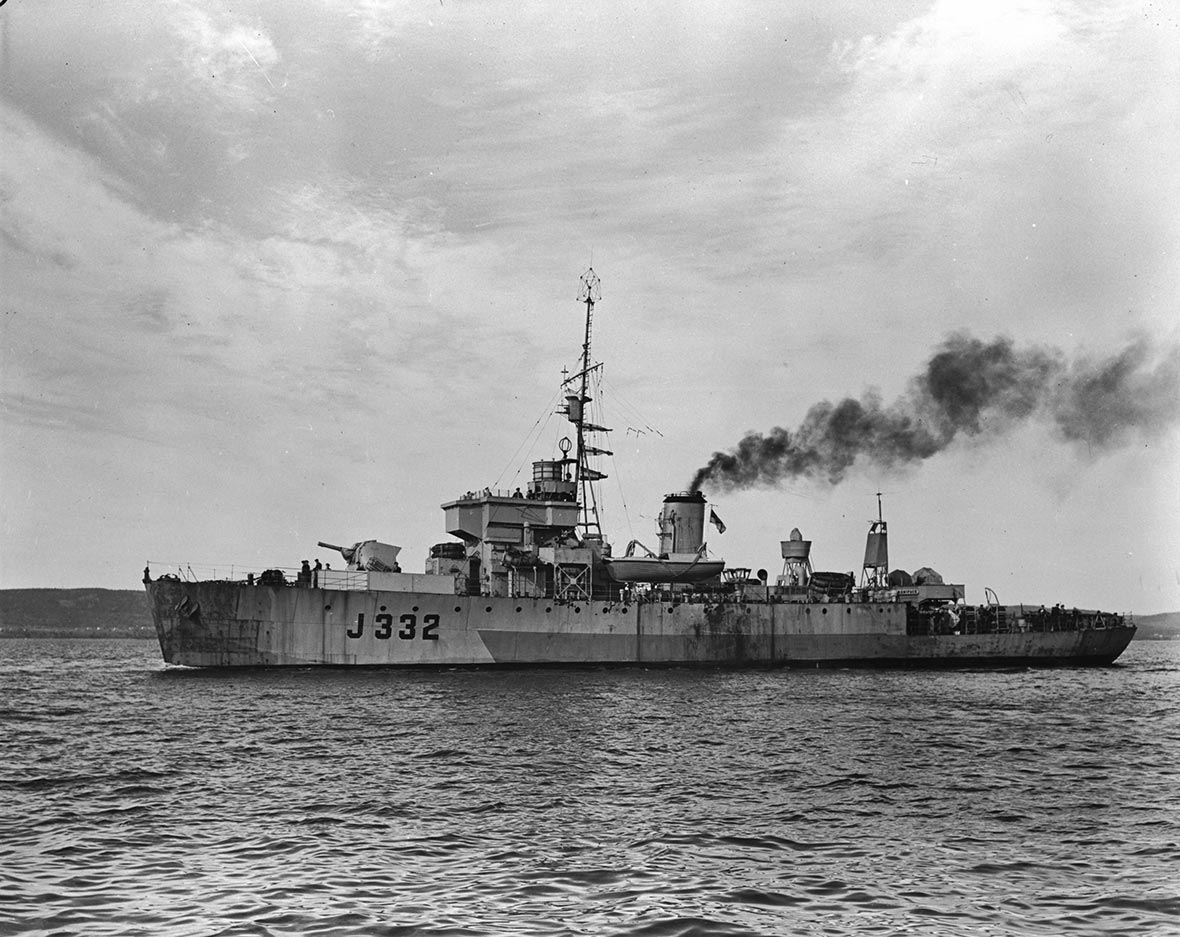HMCS St.Boniface
There has been only one vessel named HMCS St. Boniface in the Royal Canadian Navy.
HMCS St. Boniface (J332)
The HMCS St. Boniface was an Algerine Class minesweeper. The Algerine Class ships were designed as small vessels that could serve in several roles and not just as minesweepers. Their predecessors, the Bangor Class minesweepers, were bluff-bowed ships, very wet in a head sea, and arguably less comfortable even than corvettes in rough weather. These faults were eliminated in the Algerine Class, all twelve of which were built at Port Arthur, now Thunder Bay, Ontario. Intended as convoy escorts, they were not fitted with minesweeping gear. Although larger than corvettes, the latter outperformed them as ocean escorts. The Algerines found particular favour as Senior Officers’ ships in Western Local groups. After the war, most found employment for many years on hydrographic survey duties or as training ships for reservists.
Commissioned at Port Arthur on 10 September 1943, HMCS St. Boniface arrived at Halifax, Nova Scotia, in October, and worked up at Pictou, Nova Scotia, until December. She was then assigned as Senior Officer’s ship to Escort Group W-5 of Western Escort Force until April 1944. She then transferred to Escort Group W-4, again as Senior Officer, until early December when, following minor repairs at Halifax, she proceeded to Bermuda for work-ups. Upon returning to Canada, she rejoined W-4 until it was disbanded in June of 1945.
On 18 April 1945, HMCS St. Boniface collided with the freighter SS Empire Chamois in the Halifax approaches as the merchant ship’s convoy, SC.173, was forming up for passage to the United Kingdom. HMCS St. Boniface suffered extensive damage to her bows, but made Halifax under her own power and required three months of repairs.
In August 1945, she became a training ship at HMCS Cornwallis, at Deep Brook, Nova Scotia until the following January, when she was placed in reserve at Halifax. She was finally paid off on 25 September 1946, and sold for mercantile use. She was last noted under the Panamanian flag as Bess Barry M. in 1954.
- Date commissioned: September 10, 1943
- Date paid off: September 25, 1946
- Displacement: 1006 tonnes
- Dimensions: 68.6 m x 10.8 m x 2.6 m
- Speed: 16 knots
- Crew: 107
- Armament: one 4-inch (102-mm) gun, eight 20-mm guns (4 x II), one Hedgehog mortar and depth charges
Battle honours
- Atlantic 1944-1945
